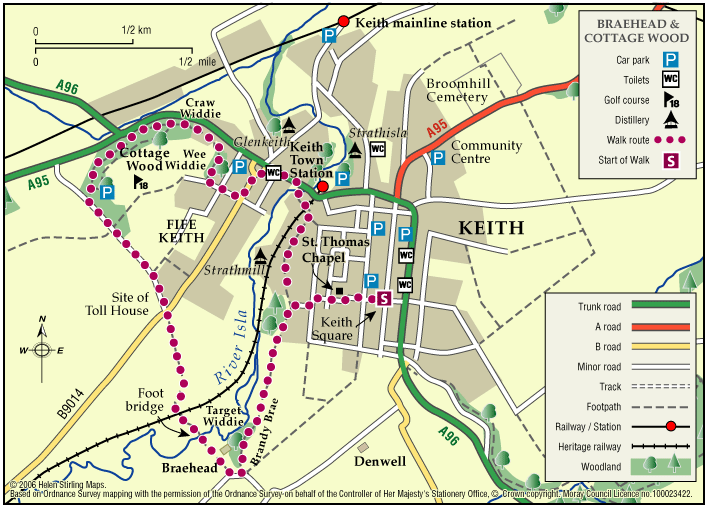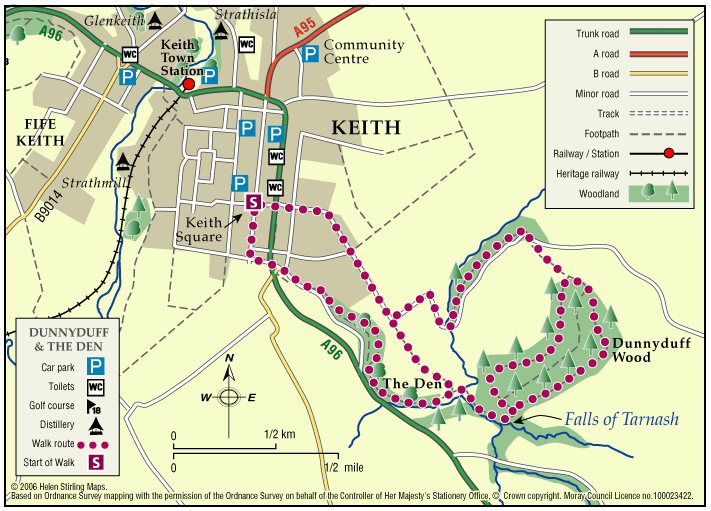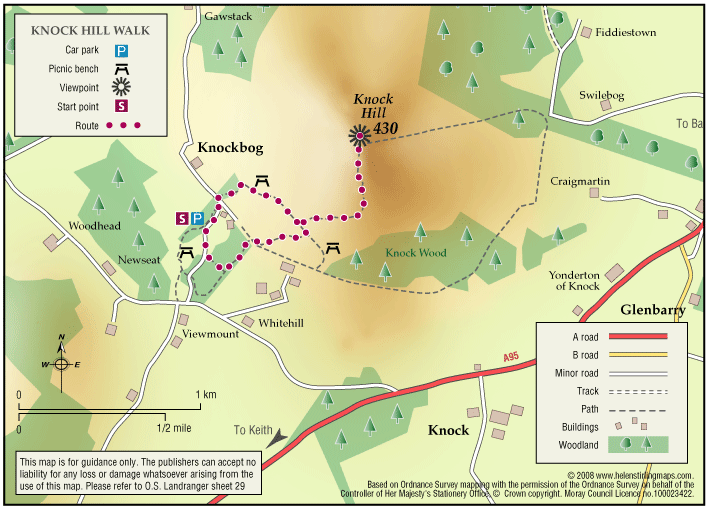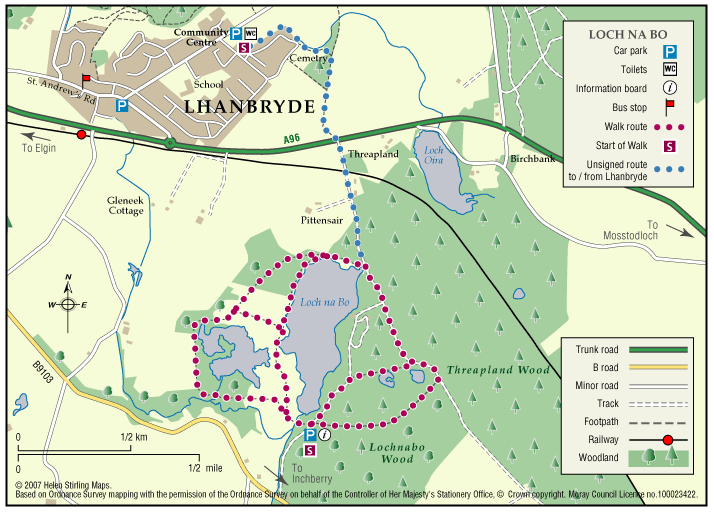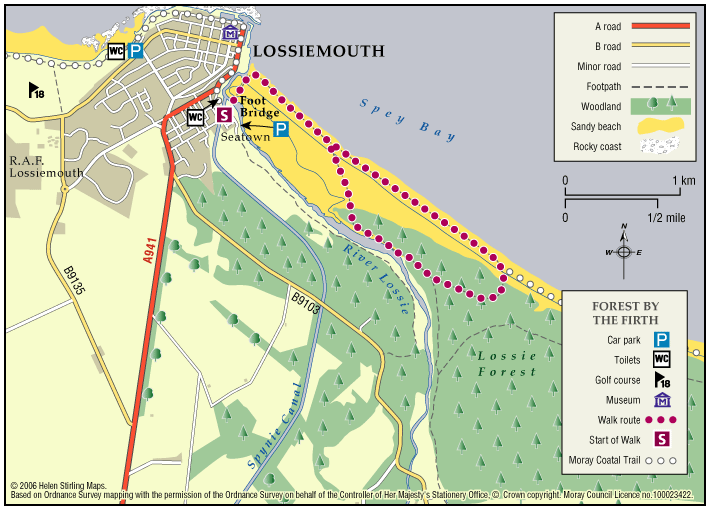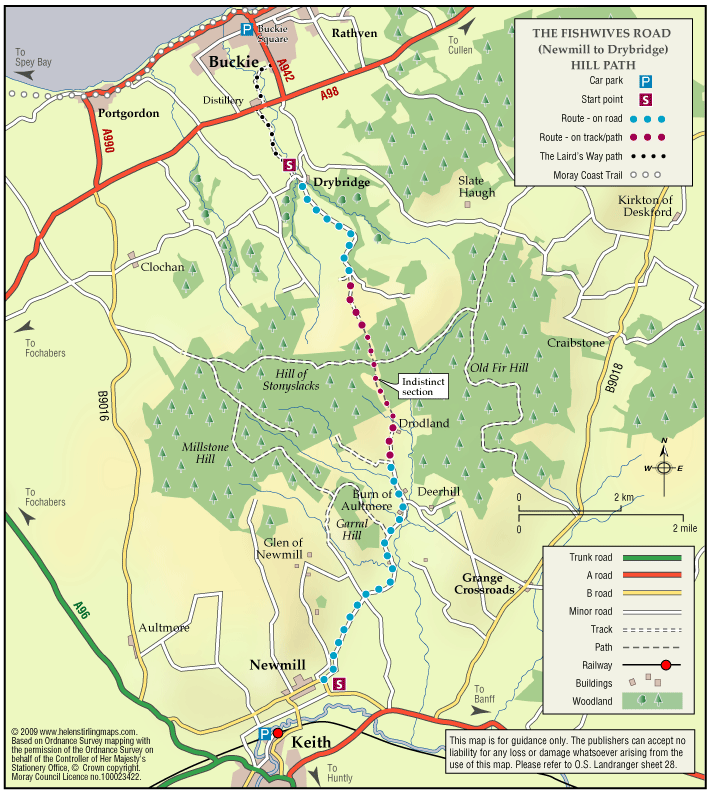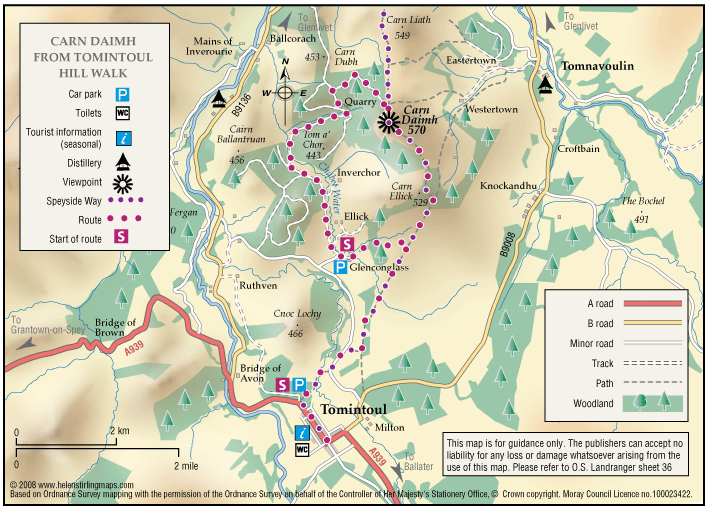Keith – Braehead and Cottage Wood
This nature walk has an abundance of flowers, shrubs, trees and wildlife along the river and hedges set against a background of heather and tree clad hills.
- Low Level Walk
- Moderate
- 4 miles (6.4 km)
- 2h 30 minutes
- Keith
- Suitable for a wide range of users
Terrain: Varied surfaces
A combination of tarred minor roads, aggregate paths and grassy tracks.
- Undulating
- Fully signed

